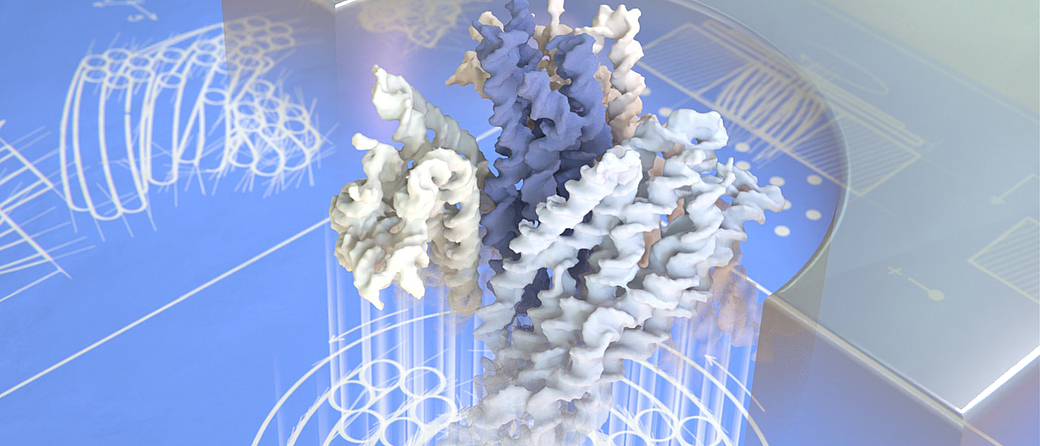Using DNA origami technology, an international research team has developed a nanoturbine. Inserted into tiny pores on a membrane in solution, it is driven by the difference in concentration on the two sides of the membrane and can perform mechanical work.
From windmills to airplanes, flow-driven turbines have made many technical achievements possible. At the cellular level, turbines are vital, for example as a component of the protein ATP synthase that produces energy in the form of ATP. However, engineering such tiny motors and turbines at the nanoscale has been difficult until now.
In 2022, researchers led by the Technical University of Munich (TUM) were able to build an electric nanomotor for the first time. Now, they are following up with a nanoturbine made of DNA material, a development from an international team with the participation of researchers from the Munich Institute of Biomedical Engineering (MIBE) at TUM.
The researchers constructed the turbines using DNA origami technology. They have a diameter of 25 or 27 nanometers, depending on their chirality. The nanoturbines are placed in tiny pores of a thin membrane in solution. There are two ways to drive the turbines: through an electric field or through a difference in salt concentration on different sides of the membrane. Depending on the chirality of the turbines and the ion concentration of the environment, they move clockwise or counterclockwise.
Under physiological conditions, the turbine operates on its own - the electrochemical potential is translated into mechanical work. The DNA nanoturbine thus creates new opportunities in nanorobotics.
Publication
Xin Shi Anna-Katharina Pumm, Christopher Maffeo, Fabian Kohler, Elija Feigl, Wenxuan Zhao Daniel Verschueren, Ramin Golestanian, Aleksei Aksimentiev Hendrik Dietz, Cees Dekker: A DNA turbine powered by a transmembrane potential across a nanopore. Nature Nanotechnology (2023). DOI: 10.1038/s41565-023-01527-8
More Information
Universities involved in the project:
• Technical University of Munich (TUM)
• Delft University of Technology
• University of Illinois at Urbana-Champaign
• Max Planck Institute for Dynamics and Self-Organization
• University of Oxford
Contact Media Relations
Carolin Lerch
Corporate Communications Center
Technical University of Munich
presse@tum.de
Scientific Contact
Prof. Dr. Hendrik Dietz
Technical University of Munich
Chair of Biomolecular Nanotechnology
Tel: +49 89 289 11615
dietz@tum.de
